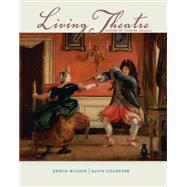
Note: Supplemental materials are not guaranteed with Rental or Used book purchases.
Purchase Benefits
Looking to rent a book? Rent Living Theatre: A History of Theatre [ISBN: 9780073382203] for the semester, quarter, and short term or search our site for other textbooks by Wilson, Edwin; Goldfarb, Alvin. Renting a textbook can save you up to 90% from the cost of buying.